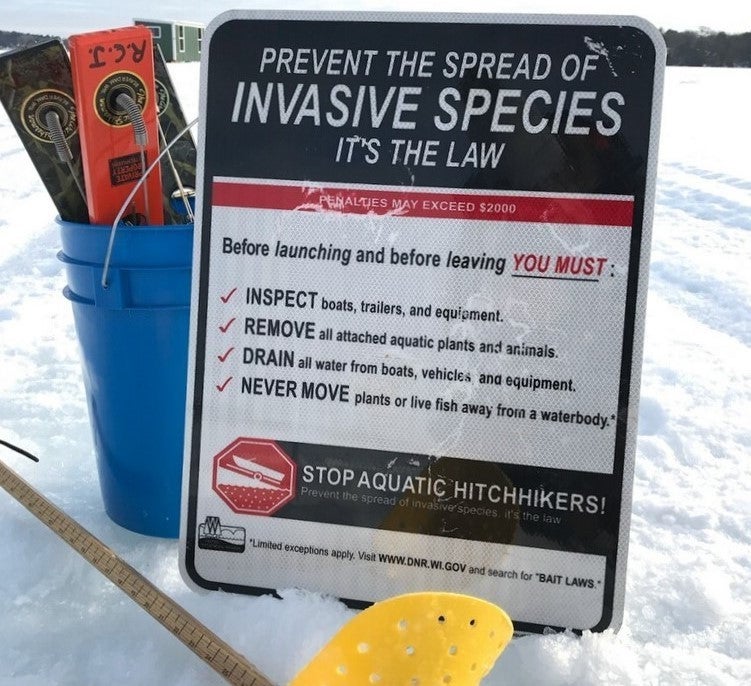Wisconsin DNR: Prevent the Spread of Invasive Species this Winter
Eugene L. 12.26.22

The Wisconsin Department of Natural Resources (DNR) and UW-Extension want anglers’ help this winter with help in preventing the spread of aquatic invasive species in Wisconsin’s lakes and rivers. While invasive aquatic species have already made their way into many of Wisconsin’s waters, there is still action anglers can take to reduce further transfers of these species when ice fishing. Even though the ice is here, by checking your gear for any mud and plant matter clinging to it. Anglers can help out the Wisconsin DNR in this effort. This includes all your gear such as sleds, boots, and augers.
Invasive species are any non-native plants, animals, and diseases. At their worst, they can cause great ecological, environmental or economic harm. At their best, they are in an ecosystem that they don’t belong in. Often invasive aquatic species will crowd out native species, adding more competition for habitat, food, or sunlight. These invasive species threaten the quality of boating and fishing in Wisconsin waters.
Two prevalent invasive species are the curly-leaf pondweed and Eurasian watermilfoil. Both of the invasive aquatic plants are winter hardy, capable of surviving the winter under the ice, this gives them an advantage over the native plants. The starry stonewort, which dies back in the winter, but can still be spread on ice and mud that comes up on your augers. Diseases, snail larvae, and mussels can also be transferred by ice and mud in the winter as well.
Another thing to consider is Viral Hemorrhagic Septicemia (VHS) which can threaten fish populations. Because of that, it is important to buy minnows only from a licensed Wisconsin bait dealer. Anglers can keep up to two gallons of water for the minnows as long as they’re used in the same body of water. Dead bait must be preserved, not fresh or frozen. Visit the DNR’s webpage on bait preservation to learn more about that and to find more rules regarding bait check out the current fishing regulations here.
A few minutes of preventative action can help preserve and protect waterways for generations to come. Before stepping onto the ice to fish and when leaving, ice anglers should:
- Inspect boats, trailers and ice fishing equipment for attached aquatic plants, animals or mud
- Remove all attached plants or animals
- Drain all water from buckets and containers
- Never move live fish away from a waterbody (fish out of water = dead)
- Dispose of unwanted bait in the trash
To learn more about invasive species and their impacts on Wisconsin’s waters and economy, visit the DNR’s aquatic invasive species webpage.
